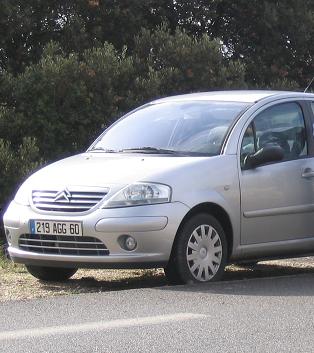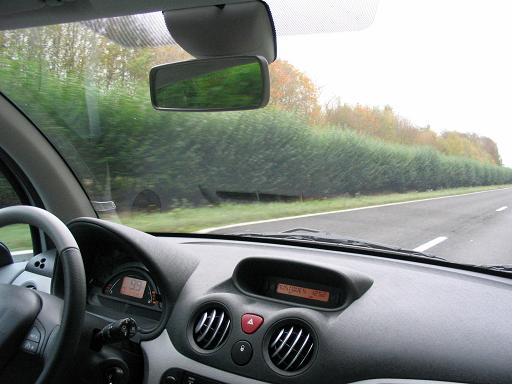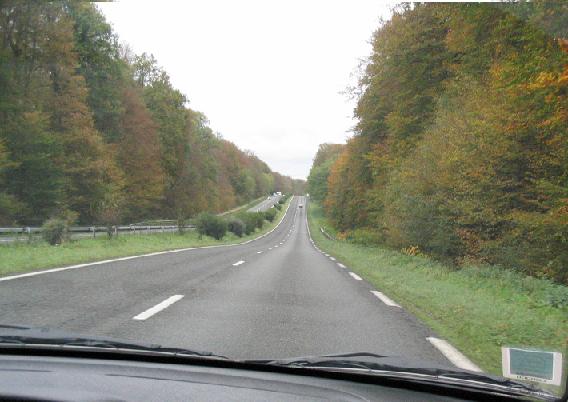Driving in France 2004

(Driving in France)
Having to drive in France is not the end of the world.
Myth number one, you have to know how to drive a manual car.
While this automotive skill will serve you well in general, a bit of research and advance planning will yield an automatic subcompact Citroen rental from the Paris CDG airport. On the other hand, counterintuitive truth number one, a Citroen subcompact can be spacious. Although the first glance in the rental lot conjures up the image of knees up to ears, a tall ceiling, like a modern VW Bug, makes it a humane transportation option - with trunk space to spare if you travel light. Counterintuitive truth number two, the turning radius is gigantic for its size and discussion of turning radius quickly loses its academic sheen when you have to make an U-turn on an unlit two lane highway after sunset - a somewhat frequent occurrence until you have figured out how to match the map with the road signs. Counterintuitive truth number three, the Citroen subcompact comes with cool functions. The most impressive one is the windshield wiper that automatically adjusts the wiping speed to the raining conditions outside.

Myth number two, European drivers are crazy and the French drivers are doubly so.
Not true - never forget that you are in a rental car and, if you think clearly, have full insurance. While French motorists are no worse than the average fellow commuters next car over, the niggardly lighting on the national highways, route nationale, is disconcerting. Admittedly, if your sole aim is to get from point A to point B, there is a potpourri of options outside of the national highways - from the well-lit and multi-lane toll roads, TGV's, to airplanes. On the other hand, if your aim is to wander an unfamiliar region, lit highways would be nice. Fortunately, maps and road signs are generally excellent even at night, as long as you figure out how to read them.

Finally, French highway planners love rotaries, a.k.a. traffic circle or roundabout. The initial ambivalence quickly fades as soon as its ability in inducing self-regulating traffic pattern without the aid of traffic lights becomes apparent. Furthermore, those rotaries offer the benefit of allowing car and driver to keep going in a circle until a decision on which outlet to take has been made – it might sound silly but is better than going in the wrong direction. On the other hand, one does wonder if some traffic designers may be taking roundabouts too seriously when there are severals within 200 meters of each other.

Next
Back to Tour de France 2004 (main index)
(C)2004 GlobalCorners About

0 Comments:
Post a Comment
<< Home